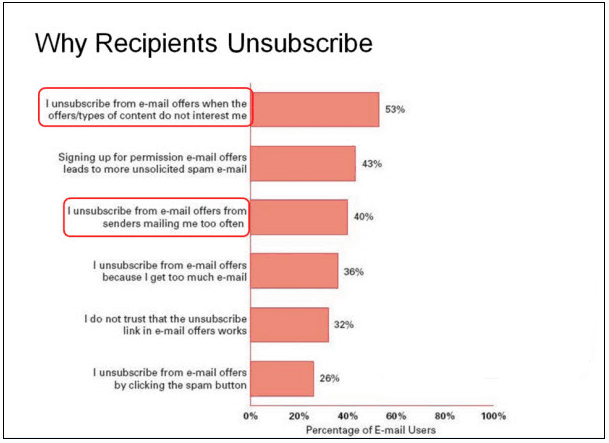Email Deliverability in 2018
I’ve had quite a few discussions recently about email deliverability. Most people seem to be aware of the basics; don’t use giant images, avoid spammy languages, and make sure that you have SPF and DKIM set up when using an email service. While that might have been enough 10 years ago, things get trickier when we talk about email domain reputations.
Email clients determine whether your message is any good based on your reputation. If you have a good reputation, you won’t have any issues getting your message through. If it’s bad, then you’re much more likely to end up in the junk folder. So, what goes into your email domain reputation?
Open Rate
Email services like Google, Yahoo!, and many others keep track of the open rate of emails sent from your system. If you have a very low open rate, then they interpret that to mean that you’re not sending good content. After all, if their users delete your emails before even reading them, they must not care about it very much. While a low open rate isn’t the biggest factor in determining your email deliverability, it can be enough to make a difference.
You can increase your open rate by sending relevant content to smaller segments rather than blasting a generic email to your whole database. People don’t really care about your organization; they care about how your organization can make an impact to them specifically. You can learn more about segmentation here.
Bounces
An email bounces when you try to send it to an invalid email address. Email addresses could be invalid due to them belonging to former employees, the inbox being full, or simply because the email was mistyped or made up. The more bounces you get, the more it affects your reputation. Why?
Bounces indicate that you haven’t validated your email lists recently. While that’s bad for a few reasons, it can be an indicator that you’ve sent emails to a purchased list. Never send emails to a purchased list, even if the selling company promises everyone is validated and opted in!
Unsubscribes
Email marketers everywhere fear the dreaded unsubscribe. When a person opts out of emails, you lose the ability to send them any kind of email communication. That makes your job of engaging and qualifying infinitely harder.
Moreover, a high unsubscribe rate means that people don’t care about the content you’re sending. Like a low open rate, this tells clients they might as well send you to the junk folder. Unlike a low open rate, a high unsubscribe rate can seriously impact your email deliverability.
You can avoid unsubscribes by sending relevant content to smaller segments. You should also make sure that you only send to people who have specifically opted in to your email lists. Just because they signed up for your newsletter doesn’t mean they also wanted special offers. And above all, don’t send emails to purchased lists!
Spam Complaints
Now we’re getting into serious territories. If you’re getting spam complaints, then you’re either sending to people who never opted in, or you’ve made it too difficult to unsubscribe. Either way, not only will spam complaints hurt your deliverability, they can also get you blacklisted. Worst of all, if you did send an email to someone who didn’t opt in, you could face serious fines and penalties per email.
You can protect yourself from spam complaints by making sure you only email people who have opted in to email marketing. Also, make sure you make the unsubscribe options clear and easy to find, and honor all opt outs in a timeline manner. And, like I said before, never send marketing emails to a purchased list!
Spam Traps
Spam traps are email addresses that are specifically set up to catch people sending emails to purchased lists. Organizations will leak these emails to list sellers. No matter what the seller says, spam traps are kept secret, and there’s no way they could vet them all. Even validation services may not protect you as the addresses are technically valid.
The only way they would appear on your email list is if you bought a list. Because of this, sending to a spam trap can impact your email deliverability more than almost anything else on this list. It’s basically a smoking gun proving you sent emails to someone who didn’t opt in. Hopefully we’ve already made this point, but don’t use purchased lists!
The Take Away
If you’re looking at this list and feel intimidated, don’t worry. Just do what you’re supposed to be doing. Send relevant content to segments, and only send emails to people who have opted in to the specific type of communication you are sending. Luckily, Lead Liaison can help you with this. If you’d like to learn more about how we protect our email marketing partners, sign up for a demo today.





